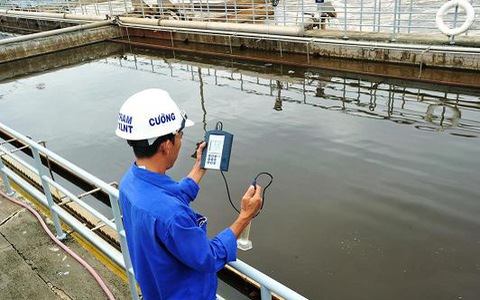Industrial wastewater is generated from the production process of plants and factories. The feature and polluted concentration of industrial wastewater are different depending on the types of industry, production line and scale. Therefore, the design of solutions and technologies for industrial waste water treatment for each customer must be flexible and suitable with actual production activities.

1. Classification of Industrial wastewater
Industrial wastewater, also known as manufacturing effluent, is generated from the manufacturing activities of factories, usually consisting of 02 types: production wastewater and mixed waste water including production wastewater and domestic wastewater. Industries with high discharge capacity and high levels of pollution include seafood, textile dyeing, pulp & paper, rubber processing, metal plating, food processing especially Beer-Alcohol-Beverage, metallurgy, metal machining…
2. Components of industrial wastewater
The main pollutants of industrial wastewater are inorganic substances (metallurgical plants, construction material plants, inorganic fertilizer plants …), dissolved organic substances (through the BOD criteria), organic substances causing odor, taste (phenol, benzene …), poor biodegradation organic substance, some organic substances are toxic to aquatic organisms ( Benzene, chlorebenzene …)
Industrial wastewater probably contains much oil, fat, grease, floating substance, suspended sustance, heavy metals, nutrients (N,P) with high concentration
3. Physical and chemical characteristics of industrial wastewater usually include:
- Physical characteristics
Colour, odour, temperature, total solids (including floating solids, suspended solids, coagulated solids, and dissolved solids which propably remove partly by sedimentation, coagulation method), common dissolved inorganic solids such as sodium, sulfate, and calcium.
- Chemical characteristics
Organic chemicals: Carbohydrate; Protein; Nutrients such as Nitrogen, Organic Phosphorus; Fat, oil, lubricant; Pesticides, plant protection products; Phenol; Surfactants …
Inorganic Composition: Alkalinity; Chlorine; Heavy metal; Inorganic nitrogen; PH; Phosphorus; Sulfur; Toxins; H2S, CH4 …
- Biological characteristics
Pathogenic factors: virus, bacteria
4. Industrial wastewater treatment solution and technology
Unlike domestic or hospital effluents, industrial wastewater of the same industry is also highly variable between different enterprises, because of different production processes, input raw materials. In addition, production technology is backward or modern also affect the volume and concentration of wastewater generated. Therefore, it is necessary to take wastewater samples for detailed analysis of characteristics and concentration of each contaminant, then select the most appropriate treatment method and industrial wastewater treatment technologies to suit each pollutant composition.

With the characteristics of containing different pollutants in both quantity and quality, it is difficult to design an efficient process and solution for all types of industrial wastewater. Therefore, if any company is looking for technology & solution to treat a specific type of industrial wastewater, please contact NGO for detailed support and advices.

***Vui lòng đọc kỹ yêu cầu về Điều khoản sử dụng – Bản quyền trước khi sao chép hoặc trích dẫn nội dung và hình ảnh của website.
Trang web này thuộc bản quyền của Công ty TNHH Quốc tế NGO (NGO International). Bất kỳ hình thức sử dụng hoặc sao chép một phần hoặc toàn bộ nội dung dưới mọi hình thức đều bị nghiêm cấm, trừ trường hợp được sự cho phép rõ ràng bằng văn bản từ Chúng tôi.

 Tiếng Việt
Tiếng Việt





